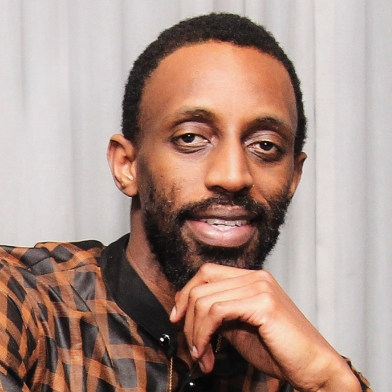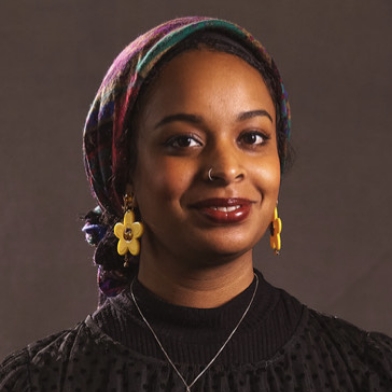
This first instalment of a two-part series, curated by MakeRoom, features the works of six artists. They explore themes of community, self-possession, connection to the past, creativity, and the power of imagination.
The hopes we had in the past, individually and collectively, shape our present. The hopes we have in the present can shape our futures. The ability to create something new, something better, depends on our ability to dream it and the aspiration to make it a reality. We invite you to think about what these pieces reveal about Black dreams and aspirations. How do they make you feel about your dreams and the dreams of those around you?
More than a space that Canadians transit through, Union station is also a space-maker for culture and art, and a role model in community investment for accessible public art. Union’s partnership with MakeRoom Inc was born out of a shared mission to create spaces for local artists that are inclusive and diverse.

I finished this painting right around the time the 2023 Nigerian presidential election was held. Election period is often stressful, even dangerous, for a lot of residents. This year was no different, but there was something else. It was moving to see millions of young Nigerians exercise their democratic right and responsibility to vote. It instilled a sense of hope and optimism. In the painting, multiple hands come together to build a ship, a vessel that takes us from where we are, to where we need to be. I believe that to build a desired and much needed future, everyone needs to be involved in the process. Everyone has a role to play, a responsibility. All hands on deck.

Yomi Orimoloye (b. 1996, Ondo, Nigeria) works with drawing, painting, and digital media. Inspired by his scientific background and Nigerian heritage, and fuelled by a love for animation, he employs simple geometric patterns, vibrant colours, and bold compositions to explore abstraction on familiar subjects and the human form. His work, infused with humour, reflects the intricacies and joys of navigating life in an old world that often feels new, forging meaningful connections through personal experiences.

My painting of St Coltrane serves as a powerful symbol of resilience and achievement within the context of Black history. John Coltrane was a pioneering jazz musician, saxophonist and composer born in 1926. He is one of the most influential figures in the history of jazz. After his death, a congregation began worshipping him as God incarnate. Coltrane's status was later changed to a saint. This artwork encapsulates the triumphs and contributions of black individuals, emphasizing the capacity for greatness despite historical challenges. Through Coltrane's narrative, my artwork inspires empowerment, urging black communities to embrace their rich heritage and recognize their potential for greatness. It serves as a reminder that strength and creativity can overcome adversity. By showcasing Coltrane's accomplishments, my painting becomes a source of pride and motivation, encouraging black individuals to pursue their passions, break barriers, and leave a lasting legacy in their respective fields.

Segun Caezar, a Nigerian visual artist based in Canada, boldly blends vibrant colours, simple shapes, and realism to craft a compelling visual language. His work is guided by his vision of breaking down systemic barriers and elevating the narratives of the African people. Caezar's art challenges preconceived notions and fosters a more inclusive dialogue. His creations serve as a bridge between Canadian and African experiences, weaving a tapestry of shared humanity.

Amaka is a Bemba word from Zambia meaning power, inner strength, force, and influence. This piece represents the strength found in solitude and the power of being grounded. In this photograph, my muse, Nyong, manifests Amaka with so much grace, beauty and bravery. The qualities that he embodies in this photograph are a reminder that Black history predates the recent traumas of slavery and colonization. My art represents the journey of returning home, as this is my dream. Nyong is my biggest inspiration in the world of fine art. Artistic expression is memory-making. This photograph carries the memory of the time we spent together creating this photoset, the laughs we had during bloopers when Nyong fell off the platform, and our conversations about being African and proud. This artwork is dedicated to my wife, Kremena, and my sister, Watipaso, for their artistic presence and assistance on this project.

Kahame Msiska is an African artist living outside of the Continent. His art displays the struggles and inner turmoil of a child uprooted from his home. Through his work, he wishes to portray a level of poignance, though he has an overwhelming feeling of freedom. Msiska describes himself as a nomad on a never ending pilgrimage, yearning to return home. He hopes you enjoy his art and can connect with this feeling.

This piece challenges the conventional notion of masculinity among indigenous Moroccan men through a retro-futurist lens, by presenting them actively dreaming by offering an alternative reality. It creates a space for authenticity and hope, allowing individuals to be their true selves and permitting them to dream. The portrayal of dreams and aspirations in 'Flowers' is complex by capturing the nuanced nature of these words within the multifaceted realities of being Black and Muslim.

Sarah Waithe is a multifaceted artist with roles spanning research, community engagement, and teaching. With her Master's degree in international development, she has actively sought avenues to merge the realms of art and research, especially regarding topics like migration. Her diverse career has seen her contribute her expertise to organizations such as the Toronto Ward Museum, Nia Centre for the Arts, and Workman Arts, in addition to her role as a researcher at the Toronto Arts Foundation.

This piece reminds us of the importance of self-discovery, which results in self-governance, to achieve our dreams and aspirations for a better future. Our future is not outside of us but within us, we are our own raw material that needs to be refined and brought into service to our communities. It aspires to an unwavering truth that all humans possess the potential to lead, and must become, but most have lost the passion of leadership. The subject of this artwork is standing in front of stairs leading to a door, his regal posture is reminiscent of engraver Hendrick Goltzsius. This symbolism is meant to inspire and encourage every Black person, by reminding them that they also possess this potential to lead to bring a change. Genuine leadership is one’s internal disposition.

Yaw Tony is a versatile artist and designer. Central to Tony's artistic philosophy is a profound exploration of the value and emotional impact of colours. Intertwined with humanity, these hues act as conduits shaping behaviour and influencing the emotional resonance of spaces. Tony's artistic journey transcends the visual realm, venturing into the existential. His work grapples with fundamental questions echoing through human consciousness, forming the crucible of motivation that propels actions and shapes destinies.

This photograph combines elements of realism and surrealism to create a visual display of how our dreams grow and evolve into a perceivable reality. It highlights the importance of keeping our younger selves’ dreams alive, even when we are older, understanding that the evolution of thought expands as we grow in life. The clouds represent our afro hair, metaphorically as dense and as light as a cloud. However our heads are not in the clouds, we are reaching for the stars while we remain grounded in who we are. It doesn't matter when you start following your dreams, or how long it takes you to make them a reality. Our dreams are as much alive as we are and will grow as we grow.

Miss Daisy is a self-described eccentric, eclectic expressionist. Based in Mississauga, she is a model, creative director, entrepreneur, and yoga instructor living the unapologetic embodiment of art in all its myriad forms. As a creative director and set designer, she uses objective and subjective reality to tell stories through editorial photographic imagery that heals and inspires.
Union is committed to reflecting the diversity of Canadians in all our programs and operations. Our programming vision encourages and celebrates creativity, diversity, inclusion and accessibility. Our goal is to strengthen the connection between public art and civic engagement ultimately striving to create connectedness amongst our communities.
Learn more–Makeroom is an arts organization and curatorial agency that provides BIPOC and Emerging Artists platforms to show their work around the city and opportunities for funding. Our goal is to create opportunities for artists that are inclusive, through processes that systematically exclude gatekeeping and nepotism from the curation process, and through the engagement of members of the arts community.
Learn more–